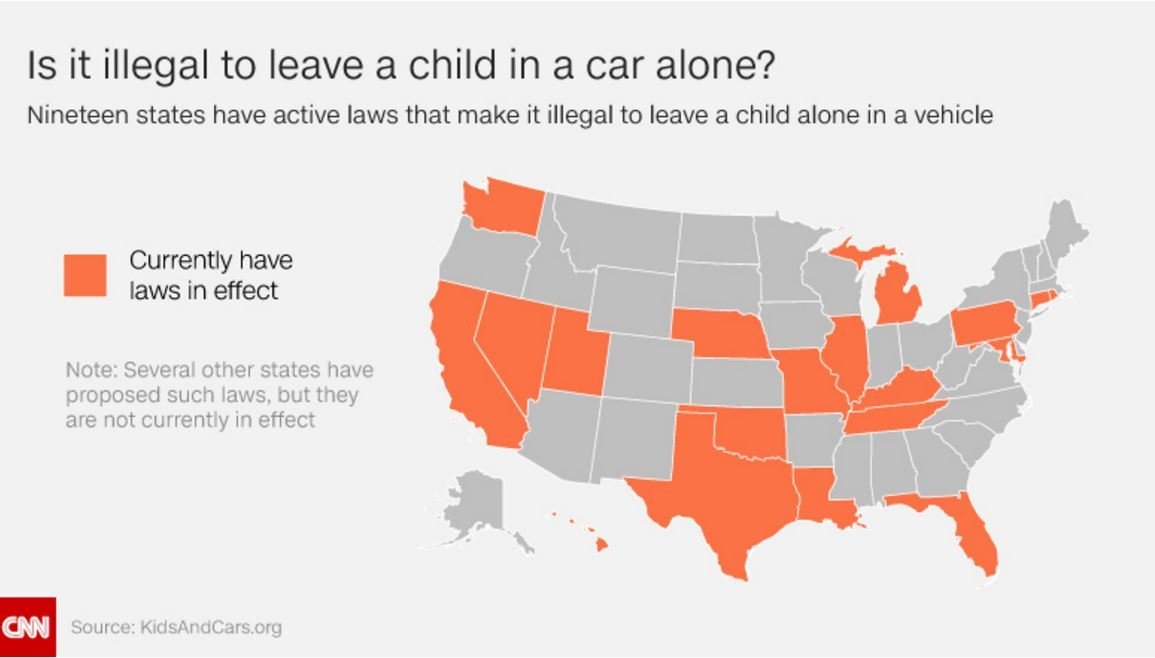Vehicular heatstroke. Hyperthermia. The devastating effects of a child being left in a hot car. It’s every parent’s unfathomable nightmare, yet it happens several times a year.
The tragedy can happen almost anywhere, and while hotter months are always the riskiest, the circumstances surrounding child vehicular heatstroke are varied.
Hot car deaths are a consistent problem
According to the safety organization Kids and Cars, an average of 37 children die each year in hot cars. These include instances where a child has been forgotten in a car, accidentally locks themselves in a car or trunk, or, in a small number of cases, when a child has been intentionally left in a car.
NoHeatStroke.org, a data site run by a meteorology and litigation expert, has been collecting data on these incidents since 1998. Since that time, the highest number of deaths per year was in 2010, with 49 deaths. 2015 had the lowest rate of incidents, with 24.
It can happen anywhere
It seems obvious that states with the highest temperatures are usually where the most deaths by vehicular heatstroke happen, but there have been instances recorded in nearly every state.
According to NoHeatStroke.org, Texas had the most such deaths from 1998 to 2015, with 100. Florida had 72 deaths, California had 44, Arizona had 30 and North Carolina had 24.
It should be noted that these figures do not adjust for population, so a larger state such as Texas or California may, statistically, have more deaths regardless of climate.
Summer always brings an onslaught of deaths
In the past week, two tragic incidents have brought vehicular heatstroke, predictably, back into the national conversation. In Texas, two young sisters died in a hot car after their mother reportedly intentionally left them there for 15 hours. In Arkansas, a 5-year-old boy died after being left in a day care van.
This is far from the worst, but the bulk of these incidents happen in the hot summer, late spring and early fall months. June through August is the deadliest time so, sadly, the numbers for 2017 will probably rise.
Younger children are more at risk
The death of a 5-year-old boy this June is an extremely unusual case, statistically speaking. A vast majority (87%) of vehicular heatstroke victims are 3 or younger. More than half (55%) are 1 or younger. According to police, the boy was found dead in a booster seat, and may have been asleep when the van arrived at the day care lot.
As Kids and Cars’ research notes, the prevalence of backseat safety seats, especially rear-facing ones, may account for the young age of most victims, since the children are out of the driver’s view and can’t effectively communicate.
Laws governing the circumstances vary
While leaving a child in a hot car can certainly bring about serious legal charges, only 19 states have concrete laws on the books that make it illegal to leave a child alone in a car in the first place.
Most of these laws refer to either “leaving a child unattended” or, more broadly, “endangering a child.”
Kids and Cars reports 15 other states have proposed similar laws.
It’s important to note many states have Good Samaritan laws that protect citizens if they intervene, reasonably, in an emergency or life-threatening situation.
Children are especially at risk because of their biology
There are some physiological differences that make children especially susceptible to heat stroke. Here are some important facts to illustrate why vehicular heatstroke is such a problem:
Kids aren’t built for heat: Children’s body tempretures rise 3-5 times faster than adults.
Seconds Count: The temperature of a car can climb 20 degrees in 10 minutes.
It doesn’t have to be hot: Heatstroke can occur in the shade, with the windows down, and even at temperatures as low as 57 degrees.



